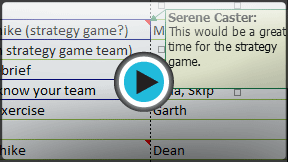Excel 2013
Track Changes and Comments
Introduction
Suppose someone asked you to proofread or collaborate on a workbook. If you had a printed copy, you might use a red pen to edit cell data, mark spelling errors, or add comments in the margins. Excel allows you to do all of these things electronically using the Track Changes and Comments features.
Optional: Download our Lesson 24 Practice Workbook.
Understanding Track Changes
When you turn on the Track Changes feature, every cell you edit will be highlighted with a unique border and indicator. Selecting a marked cell will show the details of the change. This allows you and other reviewers to see what's been changed before accepting the revisions permanently.
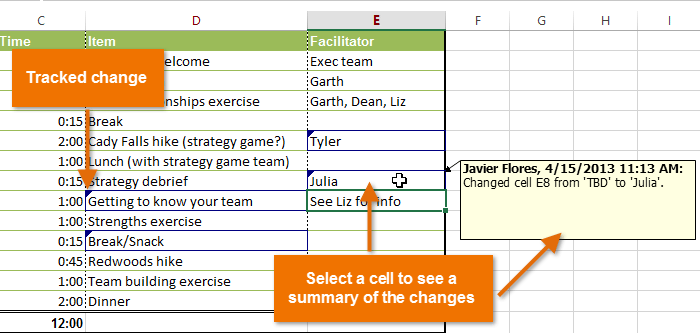 A worksheet with tracked changes
A worksheet with tracked changesThere are some changes Excel cannot track. Before using this feature, you may want to review Microsoft's list of changes that Excel does not track or highlight.
You cannot use Track Changes if your workbook includes tables. To remove a table, select it, click the Design tab, then click Convert to Range.
To turn on Track Changes:
- From the Review tab, click the Track Changes command, then select Highlight Changes... from the drop-down menu.
 Selecting Highlight Changes...
Selecting Highlight Changes... - The Highlight Changes dialog box will appear. Check the box next to Track changes while editing. Verify the box is checked for Highlight changes on screen, then click OK.
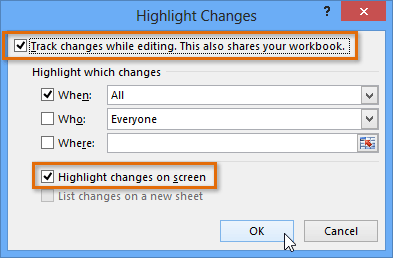 Turning on Track Changes
Turning on Track Changes - If prompted, click OK to allow Excel to save your workbook.
 Clicking OK to save the workbook
Clicking OK to save the workbook - Track Changes will be turned on. A triangle and border color will appear in any cell you edit. If there are multiple reviewers, each person will be assigned a different color.
- Select the edited cell to see a summary of the tracked changes. In our example below, we've changed the content of cell E11 from "?" to "Tyler".
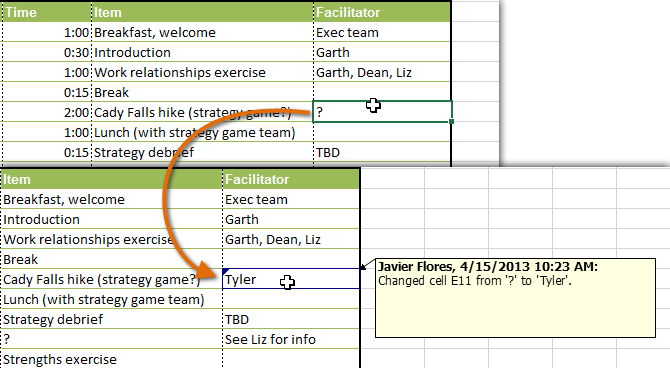 Using the Track Changes feature
Using the Track Changes feature
When you turn on Track Changes, your workbook will be "shared" automatically. Shared workbooks are designed to be stored where other users can access and edit the workbook at the same time, such as a network. However, you can also track changes in a local or personal copy, as seen throughout this lesson.
To list changes on a separate worksheet:
You can also view changes on a new worksheet, sometimes called the Tracked Changes history. The history lists everything in your worksheet that has been changed, including the "old value" (previous cell content) and the "new value" (current cell content).
- Save your workbook.
- From the Review tab, click the Track Changes command, then select Highlight Changes... from the drop-down menu.
 Selecting Highlight Changes...
Selecting Highlight Changes... - The Highlight Changes dialog box will appear. Check the box next to List changes on a new sheet, then click OK.
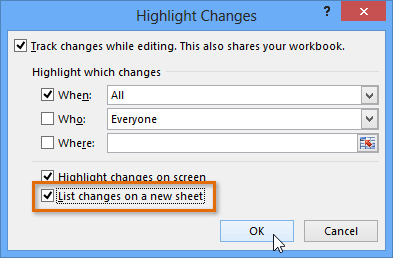 Listing changes on a new worksheet and clicking OK
Listing changes on a new worksheet and clicking OK - The tracked changes will be listed on their own worksheet, called History.
 A summary of all changes on their own worksheet
A summary of all changes on their own worksheet
To remove the History worksheet from your workbook, you can either save your workbook again or uncheck the box next to List changes on a new sheet in the Highlight Changes dialog box.
Reviewing changes
Tracked changes are really just "suggested" changes. To become permanent, the changes must be accepted. On the other hand, the original author may disagree with some of the tracked changes and choose to reject them.
To review tracked changes:
- From the Review tab, click Track Changes, then select Accept/Reject Changes from the drop-down menu.
 Selecting Accept/Reject Changes
Selecting Accept/Reject Changes - If prompted, click OK to save your workbook.
- A dialog box will appear. Make sure the box next to the When: field is checked and set to Not yet reviewed, then click OK.
 Clicking OK
Clicking OK - A dialog box will appear. Click Accept or Reject for each change in the workbook. Excel will move through each change automatically until you have reviewed them all.
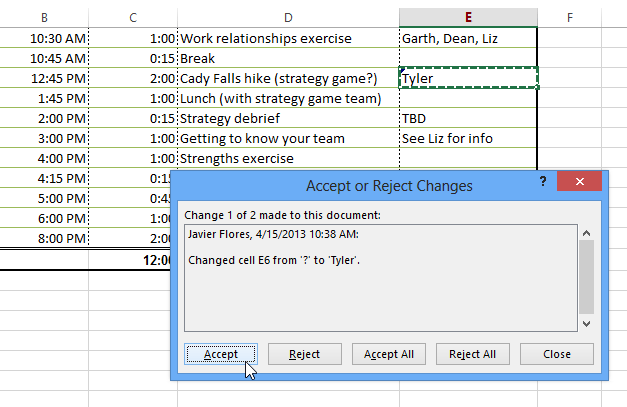 Accepting a change
Accepting a change - Even after accepting or rejecting changes, the tracked changes will still appear in your workbook. To remove them completely, you'll need to turn off Track Changes. From the Review tab, click Track Changes, then select Highlight Changes from the drop-down menu.
 Clicking Highlight Changes...
Clicking Highlight Changes... - A dialog box will appear. Uncheck the box next to Track changes while editing, then click OK.
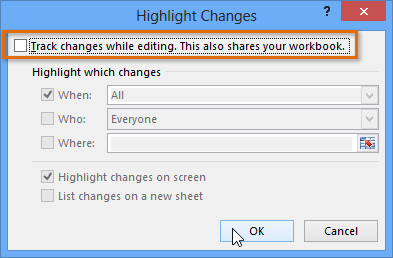 Turning off Track Changes
Turning off Track Changes - Click Yes to confirm that you want to turn off Track Changes and stop sharing your workbook.
 Confirming that Track Changes will be turned off
Confirming that Track Changes will be turned off
To accept or reject all the changes at once, click Accept All or Reject All in the Accept or Reject Changes dialog box.
Turning off Track Changes will remove any tracked changes in your workbook. You will not be able to view, accept, or reject changes; instead, all changes will all be accepted automatically. Always review the changes in your worksheet before turning off Track Changes.
Comments
Sometimes you may want to add a comment to provide feedback instead of editing the contents of a cell. While often used in combination with Track Changes, you don't necessarily need to have Track Changes turned on to use comments.
To add a comment:
- Select the cell where you want the comment to appear. In our example, we'll select cell E8.
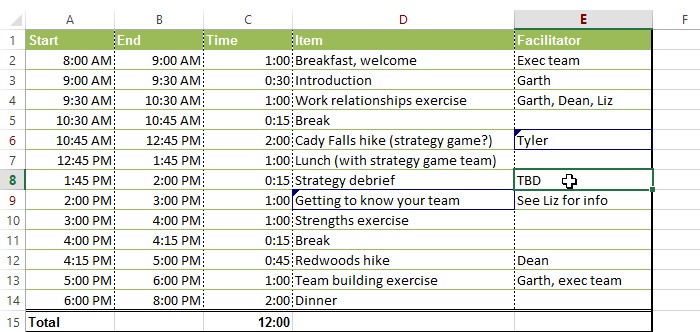 Selecting cell E8
Selecting cell E8 - From the Review tab, click the New Comment command.
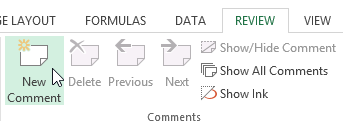 Clicking the New Comment command
Clicking the New Comment command - A comment box will appear. Type your comment, then click anywhere outside the box to close the comment.
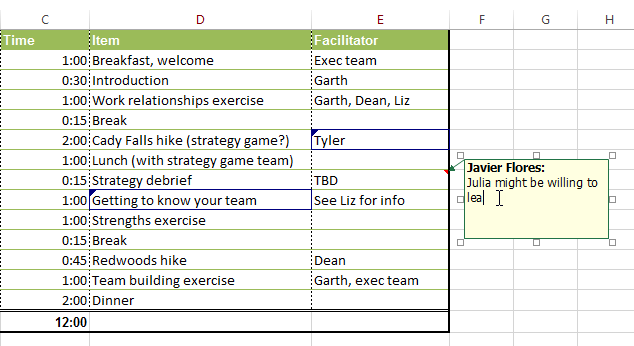 Adding a comment
Adding a comment - The comment will be added to the cell, represented by the red triangle in the top-right corner.
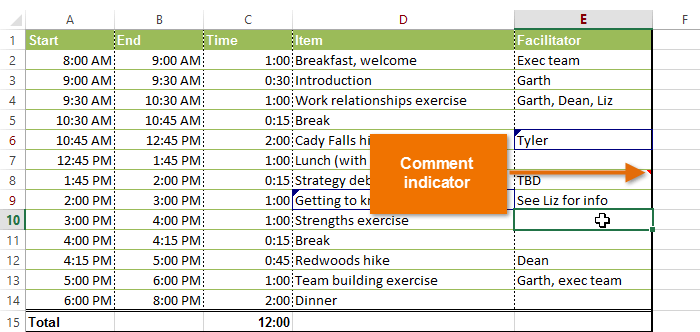 The added comment
The added comment - Select the cell again to view the comment.
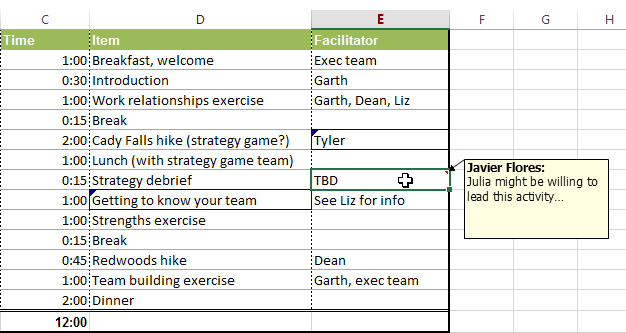 Selecting a cell to view a comment
Selecting a cell to view a comment
To edit a comment:
- Select the cell containing the comment you wish to edit.
- From the Review tab, click the Edit Comment command.
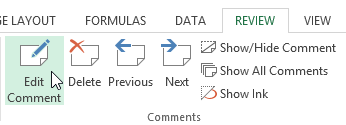 Clicking the Edit Comment command
Clicking the Edit Comment command - The comment box will appear. Edit the comment as desired, then click anywhere outside the box to close the comment.
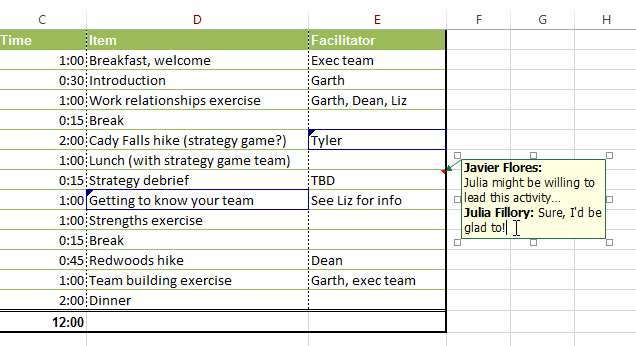 Editing a comment
Editing a comment
To show or hide comments:
- From the Review tab, click the Show All Comments command to view every comment in your worksheet at the same time.
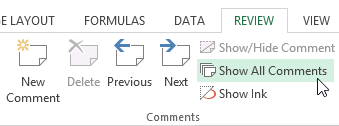 Clicking the Show All Comments command
Clicking the Show All Comments command - All comments in the worksheet will appear. Click the Show All Comments command again to hide them.
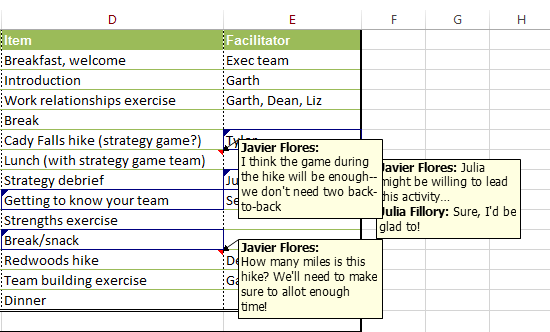 Viewing all comments at the same time
Viewing all comments at the same time
You can also choose to show and hide individual comments by selecting the desired cell and then clicking the Show/Hide Comment command.
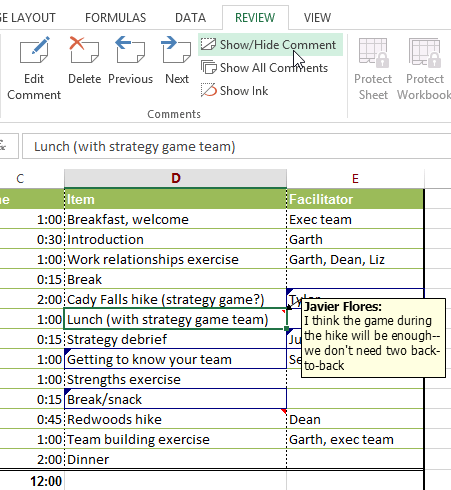 Showing and hiding individual comments
Showing and hiding individual commentsTo delete a comment:
- Select the cell containing the comment you wish to delete. In our example, we'll select cell E8.
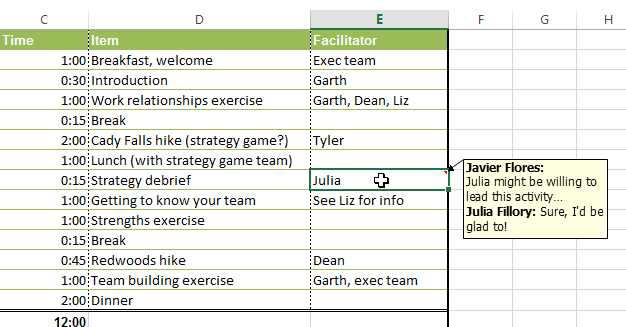 Selecting cell E8
Selecting cell E8 - From the Review tab, click the Delete command in the Comments group.
 Clicking the Delete command
Clicking the Delete command - The comment will be deleted.
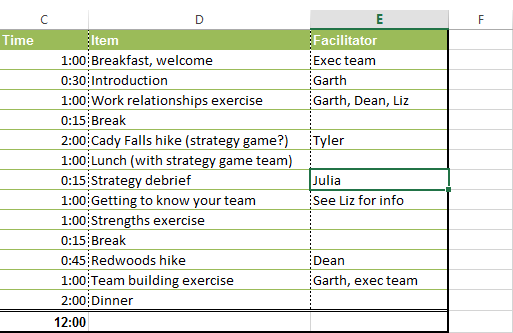 After deleting the comment
After deleting the comment
Challenge!
- Open an existing Excel workbook. If you want, you can use the Lesson 24 Practice Workbook.
- Turn on Track Changes.
- Delete, add, or edit the text in several cells. Notice how the edited cells are highlighted.
- Accept all of the tracked changes, then turn off Track Changes.
- Add a few comments to different cells in your worksheet.
- Show all of the comments, then hide them.



